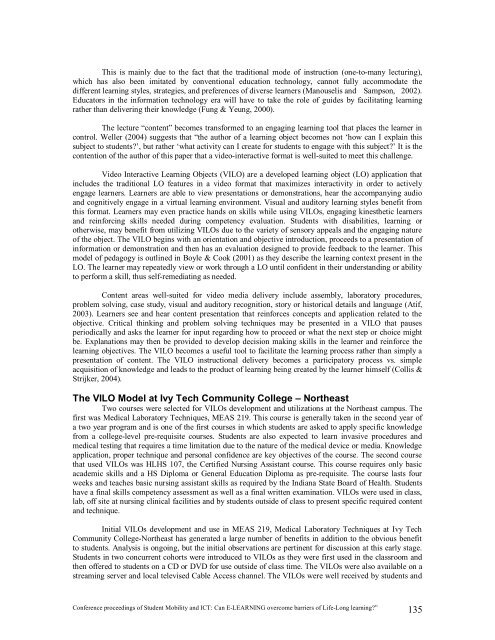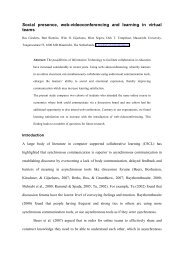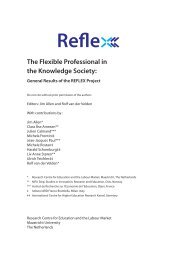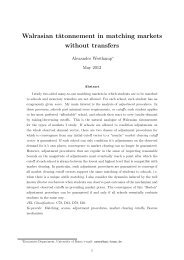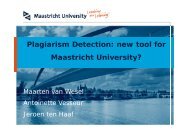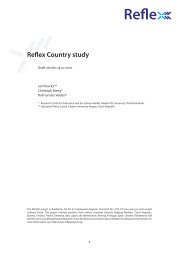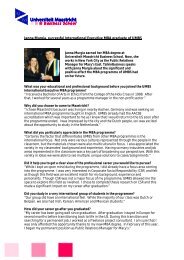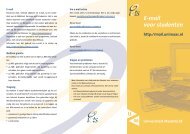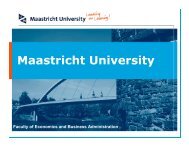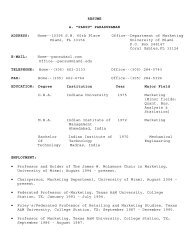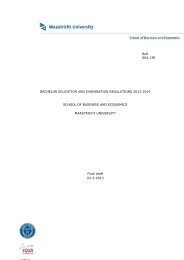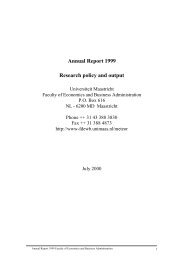proceedings of Student Mobility and ICT: Can E-LEARNING
proceedings of Student Mobility and ICT: Can E-LEARNING
proceedings of Student Mobility and ICT: Can E-LEARNING
You also want an ePaper? Increase the reach of your titles
YUMPU automatically turns print PDFs into web optimized ePapers that Google loves.
This is mainly due to the fact that the traditional mode <strong>of</strong> instruction (one-to-many lecturing),<br />
which has also been imitated by conventional education technology, cannot fully accommodate the<br />
different learning styles, strategies, <strong>and</strong> preferences <strong>of</strong> diverse learners (Manouselis <strong>and</strong> Sampson, 2002).<br />
Educators in the information technology era will have to take the role <strong>of</strong> guides by facilitating learning<br />
rather than delivering their knowledge (Fung & Yeung, 2000).<br />
The lecture “content” becomes transformed to an engaging learning tool that places the learner in<br />
control. Weller (2004) suggests that “the author <strong>of</strong> a learning object becomes not ‘how can I explain this<br />
subject to students?’, but rather ‘what activity can I create for students to engage with this subject?’ It is the<br />
contention <strong>of</strong> the author <strong>of</strong> this paper that a video-interactive format is well-suited to meet this challenge.<br />
Video Interactive Learning Objects (VILO) are a developed learning object (LO) application that<br />
includes the traditional LO features in a video format that maximizes interactivity in order to actively<br />
engage learners. Learners are able to view presentations or demonstrations, hear the accompanying audio<br />
<strong>and</strong> cognitively engage in a virtual learning environment. Visual <strong>and</strong> auditory learning styles benefit from<br />
this format. Learners may even practice h<strong>and</strong>s on skills while using VILOs, engaging kinesthetic learners<br />
<strong>and</strong> reinforcing skills needed during competency evaluation. <strong>Student</strong>s with disabilities, learning or<br />
otherwise, may benefit from utilizing VILOs due to the variety <strong>of</strong> sensory appeals <strong>and</strong> the engaging nature<br />
<strong>of</strong> the object. The VILO begins with an orientation <strong>and</strong> objective introduction, proceeds to a presentation <strong>of</strong><br />
information or demonstration <strong>and</strong> then has an evaluation designed to provide feedback to the learner. This<br />
model <strong>of</strong> pedagogy is outlined in Boyle & Cook (2001) as they describe the learning context present in the<br />
LO. The learner may repeatedly view or work through a LO until confident in their underst<strong>and</strong>ing or ability<br />
to perform a skill, thus self-remediating as needed.<br />
Content areas well-suited for video media delivery include assembly, laboratory procedures,<br />
problem solving, case study, visual <strong>and</strong> auditory recognition, story or historical details <strong>and</strong> language (Atif,<br />
2003). Learners see <strong>and</strong> hear content presentation that reinforces concepts <strong>and</strong> application related to the<br />
objective. Critical thinking <strong>and</strong> problem solving techniques may be presented in a VILO that pauses<br />
periodically <strong>and</strong> asks the learner for input regarding how to proceed or what the next step or choice might<br />
be. Explanations may then be provided to develop decision making skills in the learner <strong>and</strong> reinforce the<br />
learning objectives. The VILO becomes a useful tool to facilitate the learning process rather than simply a<br />
presentation <strong>of</strong> content. The VILO instructional delivery becomes a participatory process vs. simple<br />
acquisition <strong>of</strong> knowledge <strong>and</strong> leads to the product <strong>of</strong> learning being created by the learner himself (Collis &<br />
Strijker, 2004).<br />
The VILO Model at Ivy Tech Community College – Northeast<br />
Two courses were selected for VILOs development <strong>and</strong> utilizations at the Northeast campus. The<br />
first was Medical Laboratory Techniques, MEAS 219. This course is generally taken in the second year <strong>of</strong><br />
a two year program <strong>and</strong> is one <strong>of</strong> the first courses in which students are asked to apply specific knowledge<br />
from a college-level pre-requisite courses. <strong>Student</strong>s are also expected to learn invasive procedures <strong>and</strong><br />
medical testing that requires a time limitation due to the nature <strong>of</strong> the medical device or media. Knowledge<br />
application, proper technique <strong>and</strong> personal confidence are key objectives <strong>of</strong> the course. The second course<br />
that used VILOs was HLHS 107, the Certified Nursing Assistant course. This course requires only basic<br />
academic skills <strong>and</strong> a HS Diploma or General Education Diploma as pre-requisite. The course lasts four<br />
weeks <strong>and</strong> teaches basic nursing assistant skills as required by the Indiana State Board <strong>of</strong> Health. <strong>Student</strong>s<br />
have a final skills competency assessment as well as a final written examination. VILOs were used in class,<br />
lab, <strong>of</strong>f site at nursing clinical facilities <strong>and</strong> by students outside <strong>of</strong> class to present specific required content<br />
<strong>and</strong> technique.<br />
Initial VILOs development <strong>and</strong> use in MEAS 219, Medical Laboratory Techniques at Ivy Tech<br />
Community College-Northeast has generated a large number <strong>of</strong> benefits in addition to the obvious benefit<br />
to students. Analysis is ongoing, but the initial observations are pertinent for discussion at this early stage.<br />
<strong>Student</strong>s in two concurrent cohorts were introduced to VILOs as they were first used in the classroom <strong>and</strong><br />
then <strong>of</strong>fered to students on a CD or DVD for use outside <strong>of</strong> class time. The VILOs were also available on a<br />
streaming server <strong>and</strong> local televised Cable Access channel. The VILOs were well received by students <strong>and</strong><br />
Conference <strong>proceedings</strong> <strong>of</strong> <strong>Student</strong> <strong>Mobility</strong> <strong>and</strong> <strong>ICT</strong>: <strong>Can</strong> E-<strong>LEARNING</strong> overcome barriers <strong>of</strong> Life-Long learning?” 135


